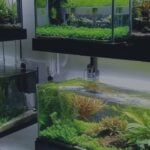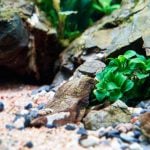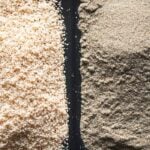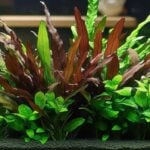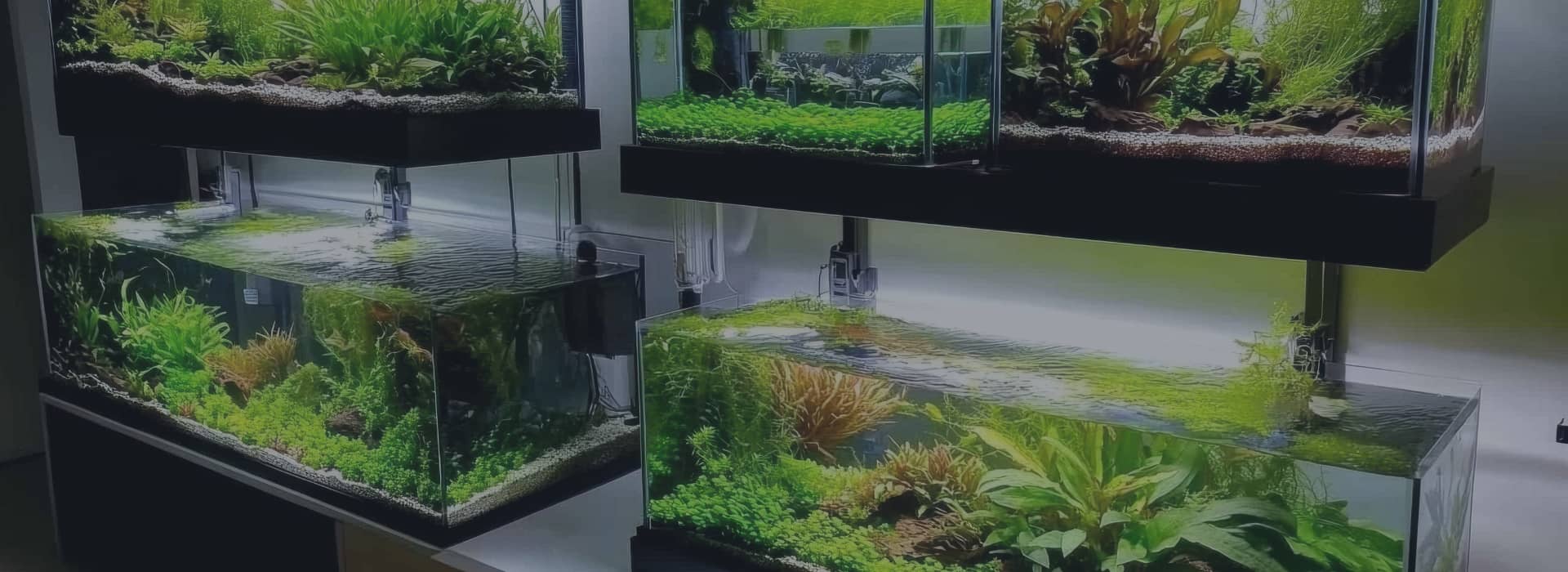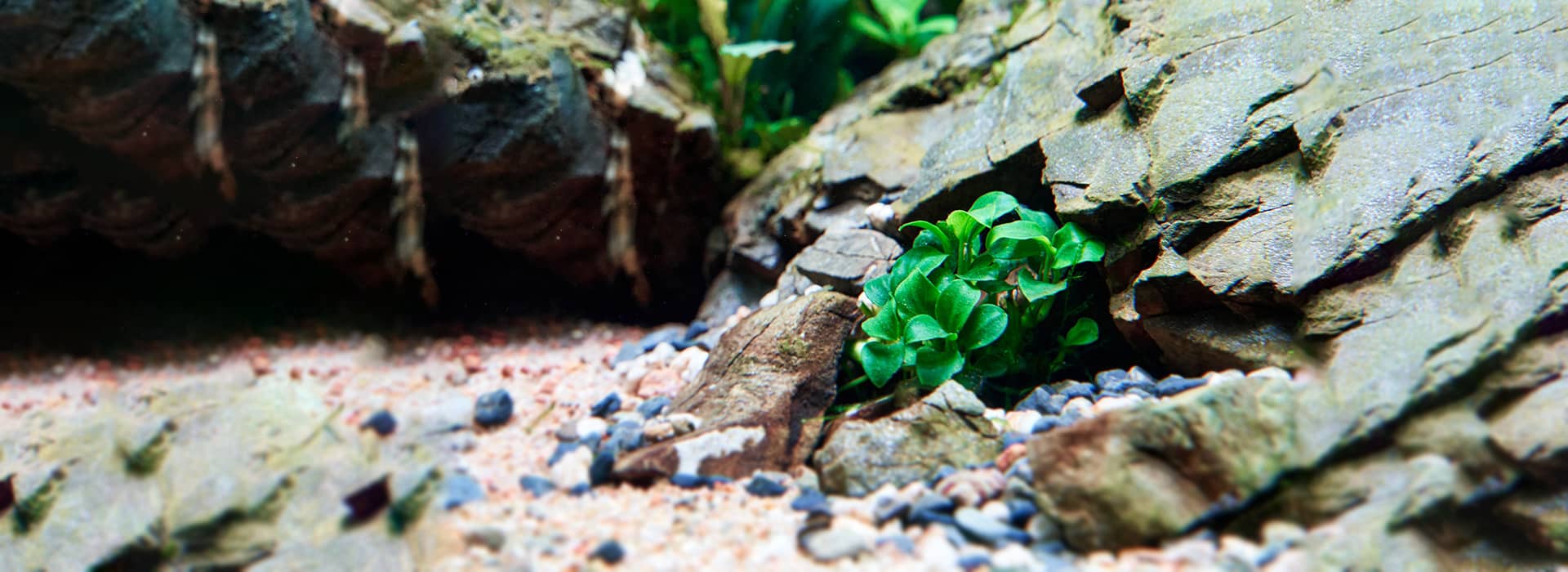Incorporating lava rock into your home aquarium can create a visually stunning and biologically rich environment. With its porous nature and aesthetic appeal, lava rock has become a popular choice for aquascaping.
What is Lava Rock?
Lava rock, also known as volcanic rock, is formed when molten lava cools and solidifies, forming a hardened rock structure.
Benefits of Lava Rock in Aquascaping
These volcanic rocks offer several advantages for aquascaping:
Natural Filtration
Their porous nature allows beneficial bacteria to colonise, which helps break down waste products in the water.
pH Stability
Lava rock, being typically pH neutral, can help maintain a stable pH level, which is crucial for the health of your fish and plants.
Aesthetic Appeal
The unique shapes and textures of volcanic rocks add an exotic and natural look to aquariums.
Anchoring Plants
They provide an excellent surface for anchoring plants, which can create a lush, green backdrop.
Aquascaping Lava Rock
Aquascaping with lava rock can range from simple arrangements to complex structures. Here are some ideas to inspire your home aquarium design.
Jungle
Strategically place various sizes of lava rocks to create a lush, jungle-like environment. Plant easy-to-grow, low-maintenance plants around them. This setup is perfect for beginners.
Cave
Stack the rocks to create caves and crevices, offering hiding spots for fish and shrimps. This not only adds to the visual appeal but also replicates the natural shelters found in the wild.
The Volcanic Island
Construct a volcanic island to create a dramatic centrepiece in your aquarium. Stack the rocks to form a mountainous structure, leaving a hollow centre to simulate a volcanic crater.
Plant ferns and mosses around the base, and add some red or orange LED lighting below to give the effect of molten lava.
Archway
Construct an archway to serve as a gateway to different sections of your aquascape or as a standalone feature. Small schooling fish will enjoy swimming through the arch.
To make the archway, lay down a large, flat lava rock on your substrate to create the arch’s base. Position two more rocks vertically on either side of the base rock to form the legs of the arch. Stack additional rocks on top of the legs to create an arch. Use aquarium-safe silicone to secure them together and let them cure completely.
Terrace
Build terraces using layers of lava rock to create depth and dimension in your aquarium. This technique is especially effective in taller tanks, allowing you to create a stepped landscape that showcases plants at different heights.
Place the largest rock horizontally on the substrate to create the base layer. Ensure it’s stable and won’t shift. Position smaller rocks on top of the base layer to create the terraces. Stagger them to achieve a natural look. Leave gaps between the rocks to create planting pockets. Use aquarium-safe silicone to secure them together.
Riverbed
Simulate a riverbed by laying down a path of smaller lava rocks and surrounding them with sand or gravel. Plant aquatic grasses along the edges to enhance the natural riverbank look. This design is perfect for bottom-dwelling fish and invertebrates.
Tips for Enhancing Your Lava Rock Aquascape
Lighting
Proper lighting can accentuate the textures and shadows of the lava rocks, adding depth to your aquascape.
Contrast
Use plants with different colours and leaf shapes to create contrast against the dark lava rocks.
Balance
While lava rocks are the stars, ensure they don’t overpower the plants. Aim for a harmonious balance between the hardscape and the greenery.
Fish Compatibility
When designing your aquascape, consider your fish’s needs and behaviours. Ensure there are ample hiding spots and swimming spaces.
Tips for Working with Lava Rock
Rinse Thoroughly
Before adding this rock to your aquarium, rinse it thoroughly to remove dust or debris.
Consider Placement
When placing lava rocks, consider the visual balance and water flow. They should be secure and not obstruct the movement of your fish or the filtration system.
Planting
Use the crevices in the rock to anchor plants. Mosses and anubias are particularly well-suited for growing on lava rock surfaces.
Maintenance
Over time, detritus can collect in rock’s pores. Regular maintenance and gentle brushing can prevent buildup and keep your aquascape looking pristine.
Frequently Asked Questions
Is lava rock safe for all types of aquariums?
Yes, lava rock is safe for both freshwater and saltwater aquariums. Its chemical stability does not adversely affect the water parameters.
How does lava rock benefit the aquarium’s ecosystem?
Lava rock provides a large surface area for beneficial bacteria to colonise, which is crucial for biological filtration. It also offers hiding spots and breeding grounds for fish and invertebrates.
Can plants grow on lava rock?
Absolutely. Many aquatic plants, especially epiphytic plants like anubias and Java fern, can attach to and thrive on lava rock.
How do I clean lava rocks before adding them to my aquarium?
Rinse them thoroughly in dechlorinated water to remove any dust and debris.
Lava Rock: a Versatile Aquascaping Material
Lava rock is a versatile and beneficial material for aquascaping. It provides a stunning backdrop for your aquatic plants and a healthy environment for your fish.
Remember to consider the needs of your aquatic inhabitants and maintain a balance between the hardscape and the plants. With these ideas and tips, you’re on your way to creating a breathtaking lava rock aquascape in your home aquarium.
With a bit of creativity and care, you can transform your home aquarium into a breathtaking underwater landscape that will be the centrepiece of any room.
